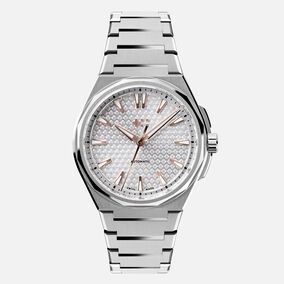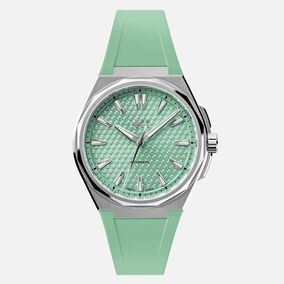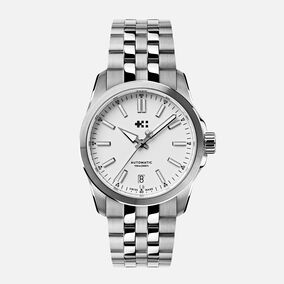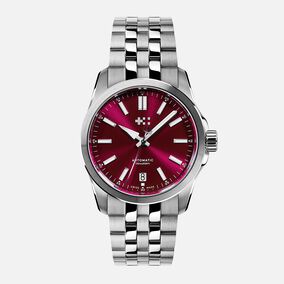With celebrity endorsements and stylish innovations to the fore, is the women’s watch market finally living up to its potential? asks Laura McCreddie-Doak
You could argue that it all started with Queen Elizabeth I, who was gifted a tiny clock set into a bracelet by Robert Dudley, Earl of Leicester in 1571. Or with another queen, this one in France – one Marie Antoinette who patronised watchmaker Abraham Louis-Breguet throughout her life, even sending him a commission from prison.
But it’s probably best to fast-forward to 2009 and chart the beginning of a sea change in women’s watches with Patek Philippe’s Ladies First Chronograph. At the opening of the new showrooms on the Place Vendôme, the brand launched its first-ever in-house column wheel-controlled chronograph movement – the CH 29-535 PS calibre.
Nothing new there, except it also announced that this calibre would have its first outing inside a women’s watch, the Ladies First Chronograph; something that was unheard of at the time. Prior to this, women had two options – ‘shrink and pinks’ (men’s watches made smaller, given a quartz movement and a pink dial), or wearing a man’s watch; something popularised by Jemima Khan when then-boyfriend Hugh Grant gifted her a Panerai.
That Patek Philippe would launch a manufacture first and do so in a women’s watch signified a shift; an acknowledgement by Switzerland that women wanted more. They wanted proper mechanics in a watch designed specifically for them.
Other brands took note. IWC, a brand that had proudly claimed it was “engineered for men” in 2014 unveiled the Portofino Midsize – a collection designed exclusively for women with a sophisticated black and white ad campaign shot by Peter Lindbergh, starring Emily Blunt and Cate Blanchett in dinner suits.
Montblanc followed suit with its Boheme launch. The horizons were broadened thanks to fashion houses starting to take watches seriously too, bringing with them a sartorial sensibility that was lacking in most Swiss manufacturers.
Name any brand and you’ll find its women’s lines are now as well thought-out as its men’s

In 2011, Dior launched a masterclass in how to marry complicated mechanics with breathtaking beauty with its Grand Bal line. These timepieces had the rotor mounted on the dial; clever, but the real stroke of genius was turning this necessary yet boring bit of machinery into a couture spectacle.
By connecting the movement of the rotor to the swish of one of Dior’s famous ballgowns, it transformed this piece of metal into a catwalk. It has since been woven with lace, turned into a fan of feathers, and even decorated with beetle wings.
The other crossover pioneer has been Chanel. The likes of the J12 and the Premiere were just the tip of the ballet pump. After the success of the Monsieur de Chanel, a surprising men’s watch that housed its first in-house movement, Chanel turned its attention to its women’s watches. Its Calibre 2 took Mlle’s favourite flower, the camelia, and rendered its architecture as a skeletonised movement housed in the iconic outlines of the Premiere case. It was beauty and brains combined and was a mere taste of where Chanel was going to take its watches.
There was the Calibre 3, which had movement parts that were galvanically grown, watch dials that showcased couture sewing techniques, and creating timepieces inspired by seamstresses pin cushions, with 2023’s Mademoiselle Privé Pique-Aiguilles collection, blurring the lines between couture and watchmaking.
And these names are just the headlines. Name any brand and you’ll find that their women’s lines are now as well thought-out, designed and executed as its men’s. Breitling has created a non-patronising feminised version of its Navitimer, a proper pilot’s watch for women; Vacheron Constantin launched its Egerie collection, which is a celebration of couture techniques, and Zenith’s Defy Midnight line opened the door to a female-oriented integrated bracelet design that isn’t a Royal Oak. The list could go on.

This isn’t just a marketing ploy, it’s making brands money. According to a 2021 report by Allied Market Research, watches priced above $1,000 sold to women in 2019 accounted for $23.7bn, which equates to 54.4 percent of the market. This figure is expected to rise to $26.7bn by 2025. The likes of Watches of Switzerland have reported sales of women’s watches growing, while on a brand level, Jaeger-LeCoultre’s sales of its famed Reverso are split 50/50 along gender lines.
However, just as women’s watches are having a moment, many brands are removing gendered categories from their communications altogether. On Christopher Ward’s website there is no filter for gender, Zenith is grouping according to case size now, and Girard-Perregaux arranges its watches by collection. There are arguments both ways. Removing gender from the conversation (many argue it shouldn’t be there in the first place) means that one’s watch choices aren’t scrutinised along traditional gender lines.
What’s stopping a man, or anyone for that matter, from wearing a 28mm diamond-set creation other than public opinion? But the concern is, as there isn’t gender parity in R&D departments or at many of the top-level decision-making roles in watch brands, the default design position in creating a gender-neutral design will always be ‘male’ because there’s no one else in the room.
Maybe this isn’t the way the problem should be addressed, and it’s the parameters that need to change. Perhaps we need a paradigm shift – a whole new design language created that doesn’t rely on time-worn binaries.
These binaries are already breaking down. Hip-hop stars love of a ‘bussdown’ (that’s custom-setting a watch with diamonds to you and me) means that diamonds are no longer just a girl’s best friend, while one of the hottest dial shades this year is pink, with Idris Elba being papped wearing the new Gucci 25H in a delightful ‘Pepto Bismol’ shade. The Met Gala red carpet this year was full of men wearing dress watches with sub-40mm cases, something that would have been unthinkable 10 years ago. What more could be achieved if watch brands ditch the gendered expectations of size, colour, stone setting, and rethink ‘the watch’ entirely? Now that would be exciting, however you identify.
Related watches
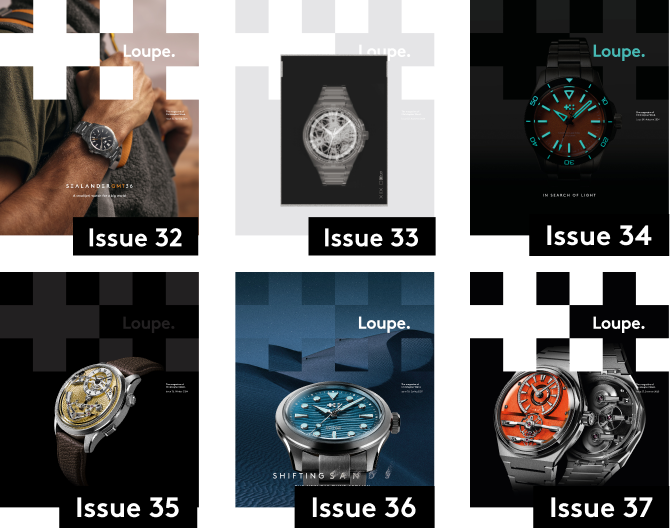
Sign up to Loupe magazine
Loupe is Christopher Ward’s quarterly in-house magazine. If you want to know what’s happening at CW (and you love great journalism), this is where to start. Alternatively, you can read all our back issues on your computer, tablet or phone.
Order your free copyRead Loupe online


